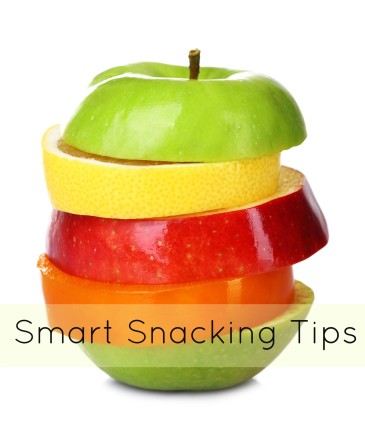Every March, the Academy of Nutrition & Dietetics encourages Americans to return to the basics of healthful eating by promoting National Nutrition Month. This year’s theme, “Bite into a Healthy Lifestyle,” encourages c onsumers to adopt a healthy lifestyle that is focused on eating and drinking fewer calories, making informed food choices and getting daily exercise to achieve and maintain a healthy weight, reduce the risk of chronic disease and promote overall health.
onsumers to adopt a healthy lifestyle that is focused on eating and drinking fewer calories, making informed food choices and getting daily exercise to achieve and maintain a healthy weight, reduce the risk of chronic disease and promote overall health.
A major component of this year’s approach is encouraging individuals to make changes one bite at a time. Small gradual changes will be most beneficial for sustainable lifestyle modification. So instead of trying to rework your entire diet pattern, start with snacking first and work your way up to each meal. Snacks can be a fun and valuable part of a person’s healthful eating pattern – but they can also add unneeded calories, sugar, sodium and fat. However, if you plan snacks ahead and choose carefully, sensible snacks can always be part of a healthful eating pattern. Snacks provide an excellent opportunity to include nutrient-dense foods like fruits, vegetables, whole grains, proteins and low-fat dairy.
Besides being a great source of nutrients, snacks provide an energy boost and satisfy mid-day hunger. To maintain consistent blood sugar levels, you shouldn’t go more than three hours without eating. A snack can help keep your blood sugar at adequate levels needed for optimal energy. If you have a small appetite or limited energy, eating several (five – six) small meals including snacks may be a better approach than the traditional three meals a day.
Snacking tips
- Plan carefully. Buy a variety of tasty, ready-to-eat foods when you shop, and keep them nearby.
- Adjust meals. When you add a snack, make the next meal smaller rather than just adding calories.
- Make snack calories count. Snack on foods that fill the nutrient gaps in your day’s eating plan. For example, eat fruit at snack time if your meals do not include it.
- Go easy on high-calorie snacks. Foods like candy, chips and sugar-sweetened beverages often contain solid fats and added sugars without giving you many nutrients. Have these only occasionally.
- Snack when you’re hungry – not because of stress or boredom. Exercise can be a helpful alternative for feeding those emotional urges.
- Eat smart portions. Choose single-serve containers, or measure a serving in a bowl rather than eating directly from the package.
- Quench your thirst. Water, low-fat or fat-free milk, 100-percent juice and herbal tea are a few options.
- Mix it up. Include a variety of snacks from each food group, such as fresh fruit, air-popped popcorn, whole-wheat crackers, a dried fruit and nut mixture, string cheese or fat-free yogurt.
To find out more about National Nutrition Month, go to www.eatright.org. Making the right food and nutrition choices is a necessary part of living a healthy lifestyle. To learn more, contact the Kendall Anderson Nutrition Center, www.nutritioncenter.colostate.edu, or make an appointment for individual nutrition coaching with a registered dietitian nutritionist. Call (970) 491-8615 to schedule your appointment today!
By Shelby Chandler, a registered dietitian nutritionist, who is studying for her master’s degree in food science and human nutrition in the College of Health and Human Sciences.